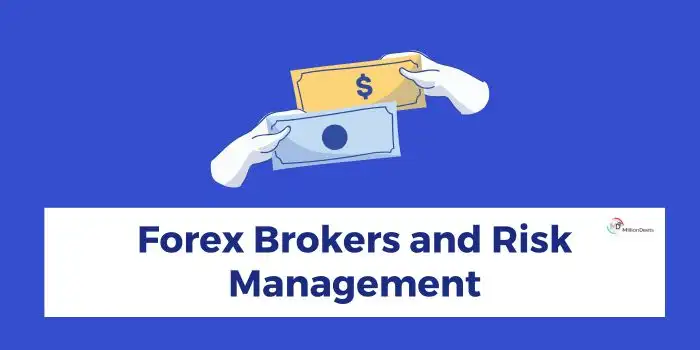Forex is a fascinating arena that remains popular among investors across many countries due to its high potential for profit-making opportunities through currency exchange rates’ fluctuations worldwide. However, Forex trading is associated with certain risks making it critical to have a competent broker. Risk Management is often difficult to learn and its best if you hire a broker to help you with this job.
Forex brokers are instrumental in connecting traders and the ever-changing Forex market providing a secure platform for buying and selling currencies. Risk management is an essential aspect of successful Forex trading, which involves utilizing tools such as stop losses and limits to manage potential risks while maximizing profits. Join us as we explore the significance of stop losses and limits in Forex trading risk management and how reputable brokers can help you deploy these tools for better results.
Table of Contents
Brief Overview of the Forex Market
The foreign exchange market is not for the faint of heart, with trillions of dollars changing hands daily among traders who hope to profit from buying/selling currency pairs influenced by fluctuating exchange rates. However, with high rewards comes equally high risks – which means understanding risk management is fundamental if you want to be successful as a Forex trader.
One effective way to limit your exposure to potential losses is to learn more about new Forex brokers in 2024and select one whose reputation speaks for itself and who meets regulatory requirements. Additionally, any comprehensive trading plan should consider smart ways of managing risk and avoiding unnecessary losses – particularly through implementing stop-loss orders. With this knowledge and a firm grasp on market concepts related to risk management under your belt, thriving in the Forex market could be within reach!
Understanding Stop Losses
In trading and investing, the term “stop loss” is commonly used to describe a particular kind of order. Setting a stop loss allows investors to protect themselves against unanticipated price movements and ensure they don’t lose more money than they are willing to risk.
When investing, one common fear is losing money due to unforeseen circumstances like volatility or downturns in particular industries or companies. However, savvy investors have learned how to protect themselves from these risks using various strategies, such as implementing stop-loss orders. By setting an automatic sell trigger at predetermined thresholds – like selling when shares hit $45 after being purchased for $50 – investors can limit their losses and preserve their capital for future opportunities.
Stop losses come in various forms, such as fixed, trailing, and guaranteed stop losses. While a trailing stop loss adjusts in response to security price changes, a fixed stop loss establishes a specific price at which the security will be sold. A type of stop loss known as a “guaranteed stop loss” ensures the selling of the investment at the predetermined price even if the market declines significantly.
Understanding Limits
It’s crucial to comprehend risk management if you’re new to FX trading. Utilizing limits is one way to accomplish this. A limit in Forex trading is a predetermined level at which you will end a trade to either restrict your losses or take profit.
Limits are essential for risk management since they let you manage your prospective losses and ensure you keep your money as you can afford. When you set a limit, you can choose the maximum amount of money you’re willing to lose or the profit you want to take from a deal.
For instance, if you are long on a currency pair, you may establish a take-profit limit that will cause your trade to be closed automatically when the price hits a particular level. Conversely, if the price drops below a certain threshold, you can set a stop loss limit to close the deal automatically.
In Forex trading, you can employ a variety of restrictions, such as take profit, stop loss, and trailing stop limits. Stop loss limitations and guard against excessive losses while taking profit restrictions to lock in winnings. Trailing stop limits ensures you lock in your earnings while lowering your potential losses by automatically adjusting to follow market swings.
Other Ways to Manage Risks
Practicing proper risk management techniques is an integral element in Forex’s trading success. Here are some proven strategies that top Forex brokers use:
- Diversification: Brokers can spread their risk exposure by spreading investments across multiple currencies.
- Hedging: Taking out contrasting position trades can help offset potential losses from other trades.
- Leverage use: Brokers must consider the potential effect of leverage on their portfolio and exercise caution when utilizing it.
- Market awareness: Staying informed about key market and economic events allows brokers to make well-informed trading decisions.
Conclusion
While many first-time Forex traders might focus solely on potentially lucrative trades or opportunities within the market they’re interested in, experienced traders know that managing risk is equally important – if not more so – than pursuing profits alone. And one crucial element of this involves working closely with reputable brokers who prioritize safety procedures and offer robust risk management tools to minimize exposure during uncertain times. Nevertheless, even with these resources, each trader must develop and follow a sound risk management plan to maximize their chances of long-term success.





